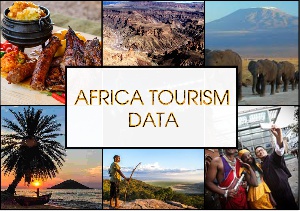Exactly a week into the New Year, Kenya released its tourism statistics for 2018 much to the admiration of industry watchers who hailed the quickness and effectiveness with which they have been able to collate and compile the data.
Kenya like just a few African countries has adopted an effective data collection mechanism as one of the multi-faceted approach to developing and growing its tourism. For countries that have paid attention to proper data collection, one thing has remained constant; that data helps to plan and properly prepare tourist destinations for visitors. Unfortunately, not so many African countries have seen the need to have an effective data collection mechanism. The few who care enough rely on statistics provided by say, their immigration authority which makes the final data not empirical enough.
Additionally, it sidelines visitor numbers and receipts from the domestic tourism space. It is against this background and more, that it has become imperative for any country that is serious about tracking its tourism numbers to adopt a more scientific means of collating data. One of such mechanisms is the Tourism Satellite Account (TSA).
The Tourism Satellite Account (TSA) is a standard statistical framework and the main tool for the economic measurement of tourism. It has been developed by the World Tourism Organization (UNWTO), the Organisation for Economic Co-opération and Development (OECD), the Statistical Office of the European Communities (Eurostat) and the United Nations Statistics Division. The Tourism Satellite Account: Recommended Methodological Framework 2008 (also known as the TSA: RMF 2008) provides the updated common conceptual framework for constructing a TSA. It adopts the basic system of concepts, classifications, definitions, tables and aggregates of the System of National Accounts 2008 (SNA 2008), the international standard for a systematic summary of national economic activity, from a functional perspective.
The TSA thus allows for the harmonization and reconciliation of tourism statistics from an economic (National Accounts) perspective. This enables the generation of tourism economic data (such as Tourism Direct GDP) that is comparable with other economic statistics. Exactly how the TSA does this relates to the SNA logic of contrasting data from the demand-side (the acquisition of goods and services by visitors while on a tourism trip) with data from the supply-side of the economy (the value of goods and services produced by industries in response to visitor expenditure).
In what could simply be described as apathy towards data gathering, African nations were some of the late adopters of the TSA. A report by UNWTO in 2010 on ‘TSA Data Around the World’ showed at the time that Egypt was the only African country out of the 60 around the world that had been identified as “having already produced or are currently developing a TSA exercise.” That effectively translated to zero sub-Saharan Africa involvement with TSA at the time. Many more countries in Africa have since subscribed to the TSA. Botswana for instance launched its updated TSA last February, having done so twice previously. That notwithstanding, most of these countries have left their TSA dormant and are unable to publish their tourism data as timeous as is required.
Tourism data constitutes one of the biggest challenges of the sector in Africa. This assertion has been made, time and again by experts, students, tourism boards and the general African public. The recognition of the tremendous benefits that tourism data brings cannot be overemphasized. It is through data collection that national tourism agencies and ministries can have the figures, based on which to advocate and push for improved sites and experiences for tourists. The United Nations Statistical Commission’s Fundamental Principles of Official Statistics reiterates, “Official statistics provide an indispensable element in the information system of a democratic society, serving the government, the economy and the public with data about the economic, demographic, social and environmental situation.”
While the TSA to some, might not be the ultimate formula for getting an absolute tourism statistics of countries, it presents opportunities for key data to be collected when one considers the pointers on which information is premised; the TSA can be seen as a set of 10 summary tables, each with their underlying data: inbound, domestic tourism and outbound tourism expenditure, internal tourism expenditure, production accounts of tourism industries, the Gross Value Added (GVA) and Gross Domestic Product (GDP) attributable to tourism, employment, investment, government consumption, and non-monetary indicators.
It is an undeniable fact that the intervention of the TSA enables governments to, amongst others, create collaborative inter-institutional platforms for more refined and integrated tourism data collection, and to purposefully identify data gaps and create action plans to produce timely and credible tourism statistics. Of course, such collaborations should be done with national statistical services and tourism agencies with the mandate to collate data. The catch with TSA is that the UNWTO has constantly supported member countries technically and in other areas to keep them updated on the dynamics and trends. Alternatively, counties could develop their own framework for gathering tourism data which conforms to globally accepted standards. Tourism data is crucial to the sector’s *growth and development in Africa and must be seen as such, after all, this industry thrives on information and how much is shared.
By: Samuel Obeng Appah
Content Editor
VoyagesAfriq Travel Magazine
@ObengAppah
Opinions of Wednesday, 23 January 2019
Columnist: Samuel Obeng Appah















